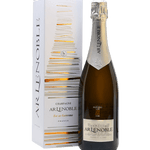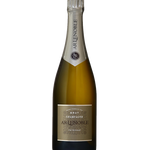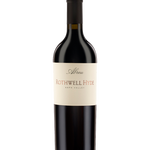Vous n'avez aucun article dans votre panier.
Wine Spoilage & Quality Check: How to Know If Red Wine Has Gone Bad?

Wine is one of the oldest and most beloved alcoholic beverages in the world. Whether you’re a wine connoisseur or simply someone who enjoys a glass of red wine occasionally, understanding wine spoilage is crucial to ensuring that the wine you’re drinking is of the highest quality. While red wine has a long shelf life when stored correctly, it is still subject to spoilage, especially once it’s opened. In this article, we will explore how to know if red wine is expired, how to tell if red wine is off, and how you can perform a quality check before opening that bottle. Whether you’re dealing with an unopened bottle that’s been in your wine cellar for years or a leftover bottle that’s been opened for a few days, understanding these signs will help you avoid drinking wine that has gone bad.
What Causes Wine Spoilage?
Before diving into how to check if red wine is bad, let’s first understand what causes wine spoilage. Several factors can contribute to the deterioration of wine, both in terms of flavor and quality:
-
Oxidation:
One of the primary causes of wine spoilage is oxidation. When wine is exposed to air, oxygen interacts with the wine’s compounds, altering its flavor and aroma. This process causes wine to lose its freshness and vibrancy, often resulting in flat or stale flavors. While some wines, particularly red wines, are designed to age and improve with time, excessive oxidation will eventually spoil the wine. -
Bacterial Contamination:
Wine spoilage can also occur due to the presence of harmful bacteria. Acetic acid bacteria, for example, convert alcohol into acetic acid, which leads to the formation of vinegar. This process can spoil the wine, turning it sour and undrinkable. -
Temperature Fluctuations:
Sudden or extreme temperature changes can also affect wine quality. If a bottle of wine is stored at high temperatures or exposed to heat, it can age prematurely and cause undesirable changes in flavor. Similarly, freezing wine can cause the liquid to expand, which might damage the bottle and affect its seal. -
Light Exposure:
Wine is sensitive to light, especially UV rays. Prolonged exposure to light, particularly sunlight, can cause chemical reactions that lead to wine spoilage. This is why wine is often bottled in dark glass, and wine cellars are kept in dark environments.
How Long Can Red Wine Last?
Red wine can last anywhere from a few days to several years, depending on its quality, type, and storage conditions. Here are some general guidelines:
-
Unopened Bottles:
Generally, wines can be categorised into windows of aging rather than a timeframe of 'lasting': they may be too young, peak at a certain point, or be past their prime. At any point in its life cycle, red will never go off, and there is no risk to your health consuming it after a certain time; it's just not going to taste great! While there isn't a definitive timeframe for how long a wine will last, bolder wines with a robust tannin structure, like Cabernet Sauvignon or Bordeaux, typically have a longer aging potential compared to lighter, more delicate varieties like Pinot Noir or Beaujolais. Proper storage in a cool, dark place is crucial for maintaining the wine’s quality throughout its life. -
Opened Bottles:
Once a bottle of red wine is opened, its shelf life is significantly shortened. Red wine lasts for about 3 to 5 days after opening if stored properly. If you store the wine in the fridge with the cork tightly in place or use a wine preservation system, it will stay fresher for longer. However, over time, even wine stored properly will begin to lose its flavor and complexity as the oxygen interacts with the wine's structure and flavor profile.

How to Know if Red Wine is Spoiled?
Now that we’ve covered the basics of wine spoilage, let’s dive into the key indicators that can help you determine if red wine has gone bad. There are several signs to look out for that will help you answer the question: How to know if red wine is spoiled?
-
Change in Smell:
One of the most obvious signs that red wine is bad is a change in its smell. Fresh wine should have a pleasant, fruity, and aromatic fragrance. If the wine has gone bad, it might smell sour, vinegary, or musty. Oxidation or the development of acetic acid can produce a strong vinegar-like odor, signaling that the wine is no longer good to drink. -
Off Taste:
A significant change in taste is another indicator of expired red wine. If the wine tastes flat, sour, or excessively bitter, it’s a sign that it has spoiled. Fresh red wine should have a vibrant, balanced taste with fruity, tannic, or slightly spicy notes, depending on the type. A wine that has gone bad will lose these elements and may leave a harsh, unpleasant aftertaste. -
Change in Color:
The richness and depth of the colour of red wine largely depend on the grape variety and the style in which it is produced. Generally, however, red wine ranges from purple to light red in shade. However, when wine starts to spoil, its color can change. If the wine has oxidized, you may notice that the color has become more brown or orange than red. This is especially true for wines that have been opened and exposed to air for an extended period. While older wines may naturally turn brown with age, a drastic color shift in a younger wine can indicate spoilage. -
Presence of Sediment or Cloudiness:
While it’s normal for some red wines, especially older bottles, to have sediment, the presence of cloudiness or an unusual amount of sediment can signal spoilage. Cloudiness in the wine can be caused by bacterial contamination or improper storage, and this may indicate that the wine is no longer suitable for drinking. -
Cork Issues:
If the cork on a bottle of red wine has come loose or has been compromised in any way, the wine may have been exposed to oxygen and could be spoiled. Screw-top bottles are less prone to spoilage due to cork issues, but corked wines are more vulnerable to oxidation if the cork is broken or damaged.
How to Tell If Red Wine is Off?
If you’re wondering how to tell if red wine is off, there are a few additional signs that can help you identify a wine that has gone bad:
-
Sour or Vinegary Flavor:
If the wine has a sharp, sour taste, similar to vinegar, it has likely been affected by acetic acid bacteria. This can happen when the wine has been improperly stored or exposed to oxygen for too long. -
Unpleasant Aftertaste:
A bad bottle of wine may leave an unpleasant, lingering aftertaste. If the aftertaste is bitter or sour, and it doesn’t match the typical flavor profile of the wine, it’s a good indication that the wine has spoiled. -
Fizzy Texture:
If your red wine feels unexpectedly fizzy or carbonated, it’s likely that a secondary fermentation has occurred. This can happen if the wine was bottled before the fermentation process was complete or if it has been exposed to bacteria. It's important to note that, especially in natural wine production, a slightly carbonated characteristic is common and a product of natural fermentation as opposed to artificial carbonation.
How Long Does Red Wine Last After Opening?
Once a bottle of red wine has been opened, it starts to oxidize, which will affect its flavor and quality. While opened red wine lasts for 3 to 5 days, the exact timeline depends on the storage method and the type of wine. If you store your red wine in the refrigerator with the cork or stopper securely in place, it will last longer than if left exposed to air at room temperature. If the wine is not consumed within a few days, it may lose its flavor and aroma completely.
For wine enthusiasts, wine preservation systems ,such as the Coravin argon gas preservation systems, can extend the life of an opened bottle by removing oxygen and keeping the wine fresh longer.
How to Prevent Red Wine from Spoiling?
Preventing red wine spoilage is all about proper storage and handling. Here are some tips to ensure your red wine stays fresh for as long as possible:
-
Store Wine in a Cool, Dark Place:
Wine should be stored at temperatures between 50°F to 59°F (10°C to 15°C) for long-term storage. Avoid storing wine in warm areas or places with fluctuating temperatures, as this can accelerate spoilage. -
Seal the Bottle Properly:
After opening a bottle, ensure the cork is tightly sealed, or consider using a wine stopper or preservation system. Oxygen is the enemy of wine, and keeping air out will help maintain its freshness. -
Avoid Sunlight:
Light, particularly UV light, can cause wine to deteriorate quickly. Always store wine in a dark, cool place away from direct sunlight or artificial light. -
Use a Wine Fridge:
If you’re serious about storing wine for extended periods, a wine fridge is the best investment. These fridges are specifically designed to maintain consistent temperature and humidity levels, preventing spoilage.

Conclusion
Understanding wine spoilage and knowing how to tell if red wine is off is key to enjoying your wine at its best. Whether you're working with an old bottle from your cellar or finishing up an opened bottle, recognizing the signs of spoilage and taking the proper steps to store your wine will ensure you get the most out of every glass. Always check for changes in color, smell, taste, and texture when assessing whether your red wine has gone bad. If you follow proper storage practices, you can enjoy red wine at its peak and avoid the unpleasant effects of spoiled wine.
Frequently Asked Questions (FAQs)
-
How do I know if red wine is expired?
If the wine has a sour or vinegary taste, an unpleasant smell, or has changed color, it’s likely expired and should not be consumed. -
How long can red wine last once opened?
After opening, red wine generally lasts between 3 to 5 days if stored properly in the refrigerator with a cork or stopper in place. -
What causes red wine to spoil?
Red wine can spoil due to oxidation, bacterial contamination, temperature fluctuations, or exposure to light. -
How can I store red wine to prevent spoilage?
Store red wine in a cool, dark place, and make sure the bottle is tightly sealed. For long-term storage, consider investing in a wine fridge. -
Can I drink red wine if it’s gone bad?
Drinking spoiled wine is not recommended, as it can cause an unpleasant taste and may not be safe. Always check the signs of spoilage before drinking.


















